
If you’re looking for the best things to see and do in Allegheny County, you’re in the right place!

The county was formed in 1788 and is named in honor of the Allegheny River.

The county seat is Pittsburgh, known as the “City of Bridges” for its 446 bridges.

Allegheny County is the state’s second-most populous county (after Philadelphia County), and Pittsburgh is the state’s second most populous city (also after Philadelphia).

In the 18th century, ownership of the area that makes up modern-day Allegheny County was hotly contested between the French, the British, and Native Americans, resulting in what became known as the French and Indian War.

In the 19th and early 20th century, Pittsburgh and the surrounding communities in Allegheny County became the world’s largest steel producing region.

Today healthcare, education, and tech-related businesses make up the core of Allegheny County’s economy.

From museums and historic sites to ballparks and zoos, here are 26 of the best things to see and do in Allegheny County.
Simply click on the blue text links on the map above or in the descriptions below to read more in-depth information about each destination.

1. Braddock’s Battlefield History Center
Braddock’s Battlefield History Center, located in North Braddock, just east of downtown Pittsburgh, serves as a poignant reminder of one of the early and significant battles in American history.

The center preserves and interprets the historical significance of the 1775 Battle of the Monongahela (also known as Braddock’s Defeat), with the museum being located on a portion of the former battlefield itself.

2. The Carnegie Museums of Art and Natural History
Two museums housed in one grand building, the Carnegie Museums of Art and Natural History offer an experience that’s both enlightening and thoroughly enjoyable, whether you’re a lifelong learner, a family with curious kids, or just looking for a unique way to spend the day in Pittsburgh.

One admission fee grants you access to both museums, a world where art, science, and history converge in the most fascinating way.

3. The Carrie Blast Furnaces
The Carrie Blast Furnaces were in operation from 1884 until 1982, turning iron ore into purified, molten iron which was then used as an ingredient in the steel-making process.

Today the Rivers of Steel nonprofit group puts on tours, workshops, exhibitions, and festivals at the Carrie Blast Furnaces, to promote tourism and economic development in the region, as well as preserving the site itself.

4. Cathedral of Learning
Standing 42 stories tall, the Cathedral of Learning is the focal point of the University of Pittsburgh’s main campus, located in the Oakland neighborhood of Pittsburgh.

The lobby, spanning from the first to the third floors, features an expansive Gothic-style Commons Room, which serves as a study space for general use.

Visitors can take a free elevator ride to the 36th floor to check out expansive views of Pittsburgh in all directions.

Guided tours of the Cathedral of Learning are also available for a small fee and can be scheduled at THIS LINK.

5. The Duquesne Incline
Opened on May 20, 1877, the Duquesne Incline in Pittsburgh continues to charm both locals and tourists with its authentic wooden cable car rides up and down the side of Mount Washington.

Cars travel at 6 m.p.h. up the 30.5 degree track, which covers 400 feet of elevation change.

The view from the top of the incline has been voted one of the top ten sites in the world for viewing a cityscape by USA Today.

6. Fall Run Falls
Fall Run Falls in Allegheny County has the distinction of being the largest waterfall near downtown Pittsburgh!

Located a mere 7 miles northeast of Pittsburgh, Fall Run Falls is a beautiful 18 foot tall waterfall tucked away in a nature park that is surrounded on all sides by housing developments.

7. The Fort Pitt Museum
The Fort Pitt Museum is renowned for its in-depth portrayal of pivotal moments in the region’s history, including a significant focus on the French and Indian War.
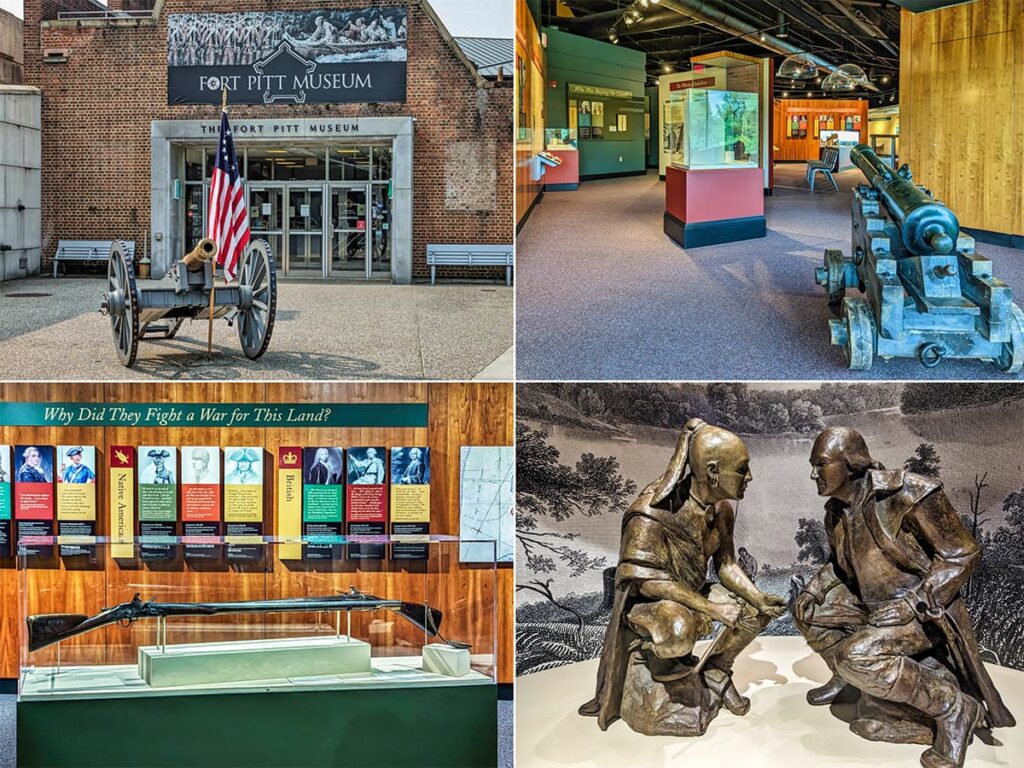
Built on the site of the original Fort Pitt, this 12,000-square-foot facility is a treasure trove of artifacts and exhibits related to the formative years of Pittsburgh, helping visitors unravel the intricate tapestry of the city’s past.

8. The Fountain of Youth
The Fountain of Youth really does exist, and you can find it in a public park just north of Pittsburgh!

Built in the 1930’s, this historic spring house has been abandoned as a source of water, but the Fountain of Youth is still a great photo-op and roadside attraction in North Park, Allegheny County.

9. The Gateway Clipper Fleet
The Gateway Clipper Fleet, based in Pittsburgh’s Station Square, cruises the city’s three rivers: the Monongahela, Allegheny, and Ohio.

The Gateway Clipper Fleet provides a variety of cruise experiences, including sightseeing tours and dinner cruises.

Naturally, the gift shop at the dock is well-stocked of pirate-themed souvenirs.

The fleet is said to be the largest inland riverboat fleet in the United States.
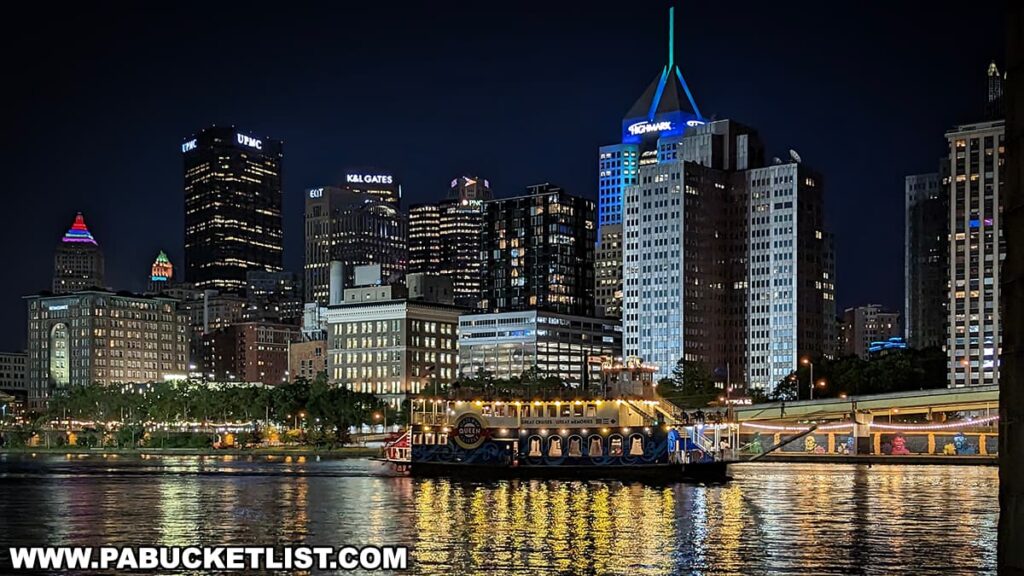
10. The Heinz History Center
The Heinz History Center in Pittsburgh is the largest history museum in Pennsylvania!

The museum includes six floors of permanent and changing exhibitions that tell the story of western Pennsylvania.

The museum is named after the late U.S. Senator H. John Heinz III, great-grandson of the founder of the H. J. Heinz Company.

11. Kennywood
Kennywood, a Pittsburgh tradition over a century old, offers classic midway attractions, seven rollercoasters, and a 12-ride Kiddieland.

12. The Living Dead Museum
The Living Dead Museum pays tribute to Pittsburgh filmmaker George Romero and the series of zombie movies he created, starting with the horror classic Night of the Living Dead in 1967.

Featuring movie props and memorabilia as well as numerous interpretive exhibits, the museum is not merely a repository of relics, but a journey through the evolution of horror film history itself.

13. The Mister Rogers Statue
Mister Rogers, whose show “Mister Rogers’ Neighborhood” was produced at WQED’s studios in Pittsburgh, was a familiar presence in the lives of generations of Americans.

The Mister Rogers Statue, commissioned by Cordelia May — a Mellon heiress, philanthropist, and friend of Fred Rogers, was unveiled on Pittsburgh’s North Shore in 2009.

Most people refer to it simply as the “Mister Rogers statue,” but its formal title, “Tribute to Children,” highlights the influence Rogers had on the youth of Pittsburgh.
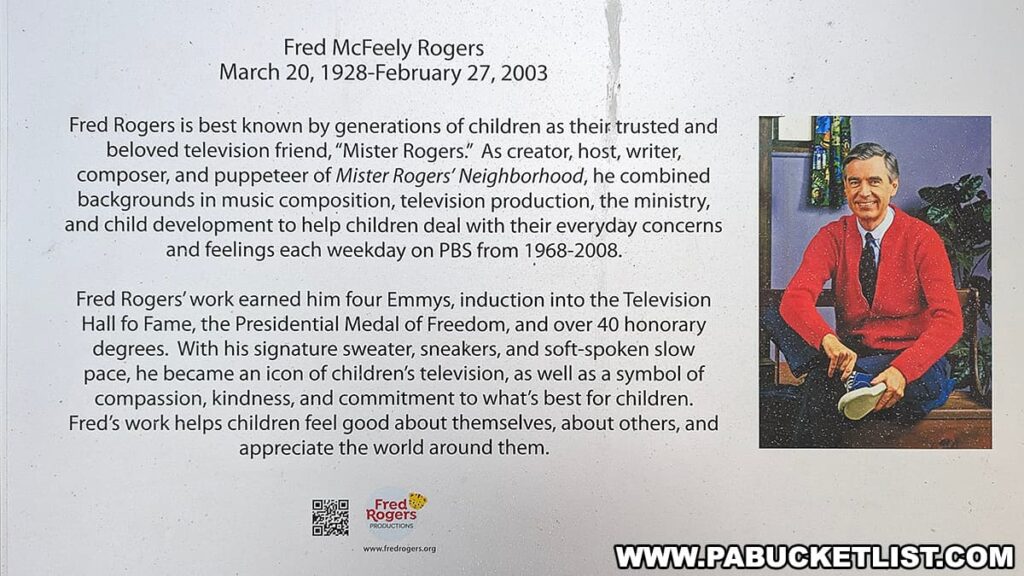
Given Mister Rogers’ reputation as a swimmer, the statue’s riverside setting is particularly apt.

Today, the Mister Rogers statue stands as a sentinel over the city, attracting visitors from Pittsburgh and beyond.

14. The National Aviary
Nestled in the historic North Side of Pittsburgh, the National Aviary is America’s largest independent, indoor zoo dedicated to birds.

The aviary is home to over 500 birds representing more than 150 species, including many that are rare or endangered.

15. Phipps Conservatory
Phipps Conservatory and Botanical Gardens spans 15 acres, featuring a 14-room glasshouse and 23 unique gardens.

The Phipps Conservatory’s Holiday Flower and Light Show is a Pittsburgh Christmastime tradition that transforms the already stunning botanical gardens into a winter fairy tale.

16. The Pittsburgh Zoo and Aquarium
The Pittsburgh Zoo and PPG Aquarium is both the largest zoo and the largest aquarium in Pennsylvania.

First opened on June 14, 1898, the Pittsburgh Zoo & Aquarium is now home to more than 8,000 animals representing over 600 species.

17. PNC Park
Many baseball fans consider PNC Park one of the best baseball stadiums in America, with its stunning views of the Pittsburgh skyline and Allegheny River as well as it’s natural grass playing surface and retro design.

The stadium opened in 2001 and can seat 38,747 people for baseball.

PNC Park has been the venue for various events, such as the 2006 Major League Baseball All-Star Game and a wide array of concerts.

Several tributes to former Pirate Roberto Clemente are incorporated into the ballpark and its immediate vicinity, and the nearby Sixth Street Bridge was renamed in his honor.

18. Point State Park
Point State Park is located at the confluence of the Allegheny and Monongahela rivers, which merge to form the Ohio River.

The park commemorates the strategic and historic heritage of the Forks of the Ohio during America’s early colonial period.

The Great Lawn, as the name implies, is a large, grassy open space at the heart of Point State Park.

A concrete tracery marking the original outline of Fort Duquesne, built by the French in 1754 and subsequently destroyed by the French in 1758, so that it would not fall into British hands.

19. PPG Place
PPG Place is a 5.5 acre office complex that has been hailed by architectural critics as “the crown jewel of Pittsburgh’s skyline.”

Located in the heart of downtown, adjacent to historic Market Square, the complex consists of six shimmering glass office buildings.

The Pittsburgh Plate Glass Company, precursor to PPG Industries, was America’s first commercially successful plate glass maker.

The UPMC Rink at PPG Place is an especially popular destination around Christmastime.

20. Randyland
Pittsburgh’s North Side is home to a vibrant roadside attraction that explodes with color and creativity: Randyland!

It’s not a park, not a museum, but a living, breathing mixed-media art installation created by the one and only Randy Gilson.

Every exterior inch of Randy’s home and workshop, from the walls to the fences, is adorned with recycled treasures and found-object art.

21. Soldiers & Sailors Memorial Hall and Museum
Soldiers & Sailors Memorial Hall and Museum is renowned as the largest memorial in the United States devoted exclusively to celebrating the valor of all branches of military veterans and service personnel.

For enthusiasts of military history, the museum’s collection of extraordinary artifacts and memorabilia provides an insight into the experiences of American service personnel throughout all of America’s conflicts, from the Civil War to modern times.

22. The Tour-Ed Coal Mine and Museum
Located 20 minutes north of downtown Pittsburgh, the Tour-Ed Coal Mine and Museum features both an underground trip into a real coal mine, and a museum of mining-related artifacts on the surface.

The highlight of a visit to the Tour-Ed Coal Mine is the chance to go underground – a half-mile underground to be precise!
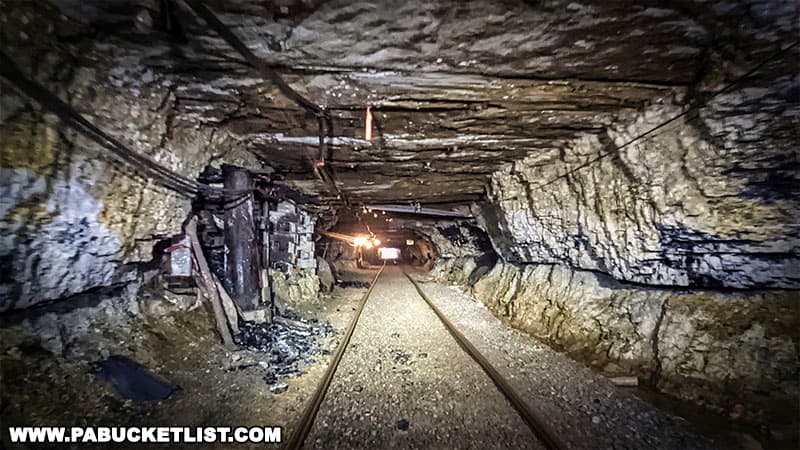
23. Western PA Model Railroad Museum
Located in Gibsonia (Allegheny County), the Western PA Model Railroad Museum is dedicated to preserving the railroading history of western PA through the use of a massive HO scale model train layout, said to be one of the largest in the United States.

Each year, between mid-November and mid-January, the museum holds an annual holiday train show entitled “A Railroad Journey in Miniature”, where visitors can come and enjoy 2 floors worth of model train layouts and railroading memorabilia.

24. Westinghouse Atom Smasher
The abandoned Westinghouse Atom Smasher is an iconic relic from the dawn of the atomic age in the United States.

For almost 80 years, the Westinghouse Atom Smasher was a landmark in Forest Hills, a suburb of Pittsburgh roughly 10 miles east of downtown.

According to the Institute of Electrical and Electronics Engineers, the Westinghouse Atom Smasher “made possible precise measurements of nuclear reactions and provided valuable research experience for the company’s pioneering work in nuclear power.“

25. The Henry Clay Frick Estate
The Henry Clay Frick estate offers a glimpse into the lavish Gilded Age lifestyle of one of Pittsburgh’s wealthiest families in the late 19th century.

The estate is a testament to the life and times of Henry Clay Frick, a titan in the Pittsburgh steel industry, and whos aggressive business tactics played a significant role in the infamous 1892 Homestead strike.

Today, the estate stands not only as a monument to American industrialism and wealth but also as a witness to the era’s tumultuous labor relations.
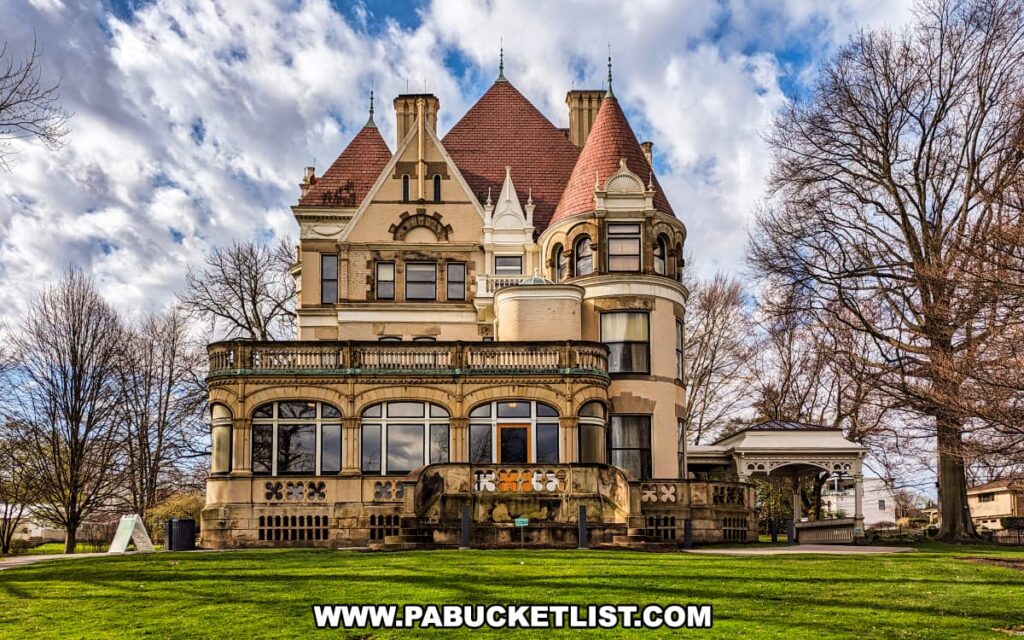
26. The Remnants of Historic Forbes Field
Forbes Field, constructed in 1909, was the one-time home of the Pittsburgh Pirates, Pittsburgh Steelers, Homestead Grays, and Pitt Panthers.

It witnessed numerous historic moments, including Bill Mazeroski’s Game 7 World Series-winning homer in 1960.

Although Forbes Field was demolished in 1972, parts of its structure linger, making it an interesting pilgrimage for baseball fans and history enthusiasts alike.

So there you have it – 26 of the best things to see and do in Allegheny County, PA!

Nearby Attractions
5 Must-See Attractions in Butler County is your guide to some of the best things to see and do in Allegheny County’s neighbor to the north.
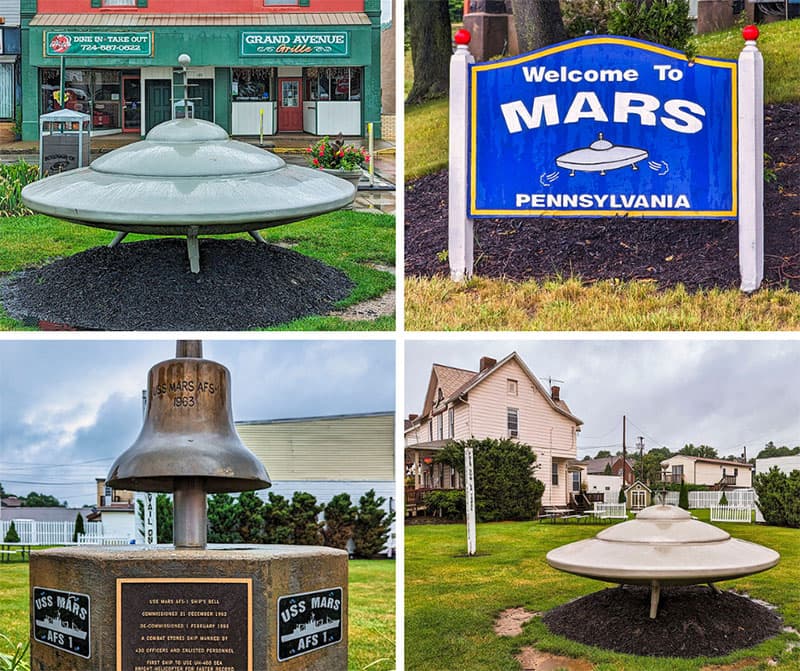
21 Must-See Attractions in Westmoreland County is your guide to some of the best things to see and do in Allegheny County’s neighbor to the east.

Did you enjoy this article?
If so, be sure to like and follow PA Bucket List on Facebook, Instagram, and/or Pinterest to learn more about the best things to see and do in Pennsylvania!
Click on any of the icons below to get connected to PA Bucket List on social media.


